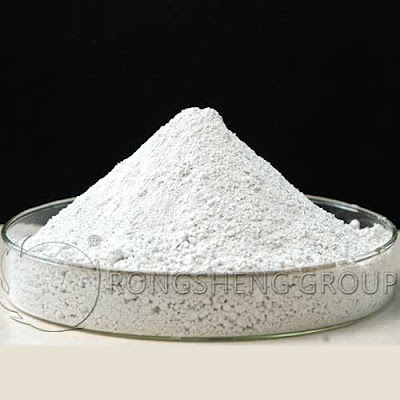Application of Zirconium Silicate in Traditional Ceramic Industry
The application ratio of zirconium silicate in the traditional ceramic industry. Daily ceramics and sanitary ware are mainly used for the high-temperature opaque glaze, and their content is 8-12% and 8-14% respectively. Glazed interior wall tiles are used for cosmetic soil and zirconium white frit, the content of which is 4-10% and 10-12% respectively. The early porcelain polished tiles were used for ultra-white tiles, and their content was 3-5%; more than 3-5%, the internal irradiation and external irradiation increased significantly. Therefore, many companies reduce the amount of zirconium silicate in polished tiles, generally adding 1-2%, and glazed products will also add 1% zirconium silicate or zircon powder to increase stability. But none of this is the main application. Application of zirconium silicate in the traditional ceramic industry. The application of zirconium silicate in pigment-related fields is above 50%. Zirconium silicate is a non-toxic, odorless white or off-white powder. It is made of natural high-purity zircon sand concentrated through ultra-fine grinding, iron removal, titanium processing, surface modification treatment, and other processes. It is a high-quality and inexpensive ceramic glaze opacifier, whitening agent, anti-seepage agent, and stabilizer.
 |
| Zirconium Silicate in the Traditional Ceramic Industry |
Application of Zirconium Silicate in the Traditional Ceramic Industry
1. Judging from the consensus reached by the ceramic industry
Another function of zirconium silicate in the traditional ceramic glaze is to increase the hardness of the glaze and improve its wear resistance of the glaze. In raw glaze, zirconium silicate is generally used and little or no zircon powder is used because the zircon powder is thicker and the whitening is not obvious. The amount of zirconium white frit used in glazed ceramic interior wall tiles has increased significantly in recent years. The production condition of frit processing enterprises is good, but zircon powder (325 mesh/800 mesh) is generally used in the formula instead of zirconium silicate. Cosmetic soil generally uses zirconium silicate, one is to increase the whiteness of the cosmetic soil, and the other is to adjust the expansion coefficient and stability of the cosmetic soil.
2. From the research and production situation
Zirconium silicate has a better effect when adding raw material to medium and high-temperature glaze. A certain amount of zirconium silicate is generally added to the high-gloss and matt glazes of sanitary ware and glazed porcelain tiles. As the above two categories of products have good development prospects in the Chinese market, the consumption of zirconium silicate will increase. In China, the whiteness of polished tiles was once pursued, so more zirconium silicate was used in the formula of porcelain blanks. Some companies use up to 3-5%, which greatly increases the amount of zirconium silicate. At the same time, it was found that a large amount of addition made the radioactivity of the polished tile exceed the standard, so the current enterprise generally reduces the amount to 1-2%, and the amount added in some ultra-white line points can reach 3-5%.
Two Main Roles of Zirconium Silicate in Ceramic Glaze
1. Improve the hardness of ceramic glaze
Zirconium silicate has good chemical stability, is not affected by the firing atmosphere of ceramics, and can significantly improve the separation performance of ceramic glaze and improve the hardness of ceramic glaze.
2. Whitening effect
Zirconium silicate can play a whitening effect in ceramic glaze, because it forms baddeleyite zircon after the ceramic is fired, so as to scatter the incident light wave to achieve the effect of opacity and whitening.
As a high-quality and inexpensive opacifier, zirconium silicate is widely used in various construction ceramics, sanitary ceramics, daily-use ceramics, first-class ceramics, etc., with a wide range of applications a large amount of applications. Zirconium silicate has also been further used in the production of color picture tubes in the TV industry, emulsified glass in the glass industry, and enamel glaze production. Zirconium silicate has a high melting point, so it is also widely used in refractory materials, glass furnace zirconium ramming materials, castables, and spray coatings.



评论
发表评论